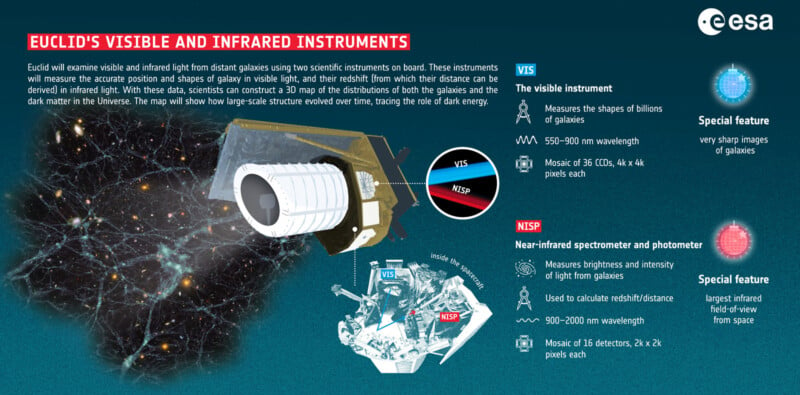The Euclid space telescope discovered something incredible in the Milky Way’s cosmic neighborhood, a spectacular Einstein ring.
An Einstein ring is a spectacular phenomenon wherein the light from a distant galaxy bends to form a visible ring surrounding a foreground object. Gravity routinely affects light in space, and scientists frequently rely on gravitational lensing during observations. However, what makes an Einstein ring so special and visually spectacular is that when the distant light source, the lensing object, and the observer are in perfect alignment, the gravity-warped light appears as a beautiful ring.
Gravitational lensing was predicted by Einstein’s theory of general relativity, which is why the event shares his namesake. However, it is worth noting that Einstein rings are also sometimes referred to as Einstein-Chwolson or Chwolson rings, named for Russian physicist Orest Chwolson, who notably was among the first to study gravitational lensing.
Thanks to gravitational lensing, especially massive objects, like galaxies or clusters of galaxies, can act like cosmic magnifying glasses, enabling telescopes like Euclid to see much more distant objects than would otherwise be possible.

Euclid, an incredible new space telescope that more than 2,000 scientists from 300 international institutes helped build, began early testing in space in September 2023. At that time, Euclid Archive Scientist Bruno Altieri observed a slight hint of an Einstein ring in early test shots.
“Even from that first observation, I could see it, but after Euclid made more observations of the area, we could see a perfect Einstein ring,” Altieri explains. “For me, with a lifelong interest in gravitational lensing, that was amazing.”
From Euclid’s perspective at L2, nearly a million miles from Earth (1.5 million kilometers), the Einstein ring encircles the elliptical galaxy NGC 6505. This elliptical galaxy is about 590 million light-years away, which is not nearly as far as it sounds. As NASA describes it, NGC 6506 is “close by” on a cosmic scale.

The ring of light hitting Euclid’s 600-megapixel wide-angle image sensor has traveled about 4.42 billion light-years, originating from a much more distant, very bright galaxy. The source galaxy has not been directly observed yet and doesn’t have a name.
“An Einstein ring is an example of strong gravitational lensing,” says Conor O’Riordan, of the Max Planck Institute for Astrophysics, Germany, and lead author of the first scientific paper analyzing the ring. “All strong lenses are special, because they’re so rare, and they’re incredibly useful scientifically. This one is particularly special, because it’s so close to Earth and the alignment makes it very beautiful.”
“I find it very intriguing that this ring was observed within a well-known galaxy, which was first discovered in 1884,” adds Valeria Pettorino, ESA Euclid project scientist.
“The galaxy has been known to astronomers for a very long time. And yet this ring was never observed before. This demonstrates how powerful Euclid is, finding new things even in places we thought we knew well. This discovery is very encouraging for the future of the Euclid mission and demonstrates its fantastic capabilities.”

Euclid is designed to improve understanding of gravity and the nature of dark energy and dark matter. Einstein rings are an excellent way for scientists to explore these topics, as dark matter contributes to how light bends into a ring.
Euclid will map more than a third of the sky during its mission, observing billions of galaxies up to 10 billion light-years away. The team expects to find around 100,000 strong gravitational lenses, although it will be difficult to find one this beautiful.
Image credits: ESA/Euclid/Euclid Consortium/NASA, image processing by J.-C. Cuillandre, G. Anselmi, T. Li; CC BY-SA 3.0 IGO or ESA Standard License



